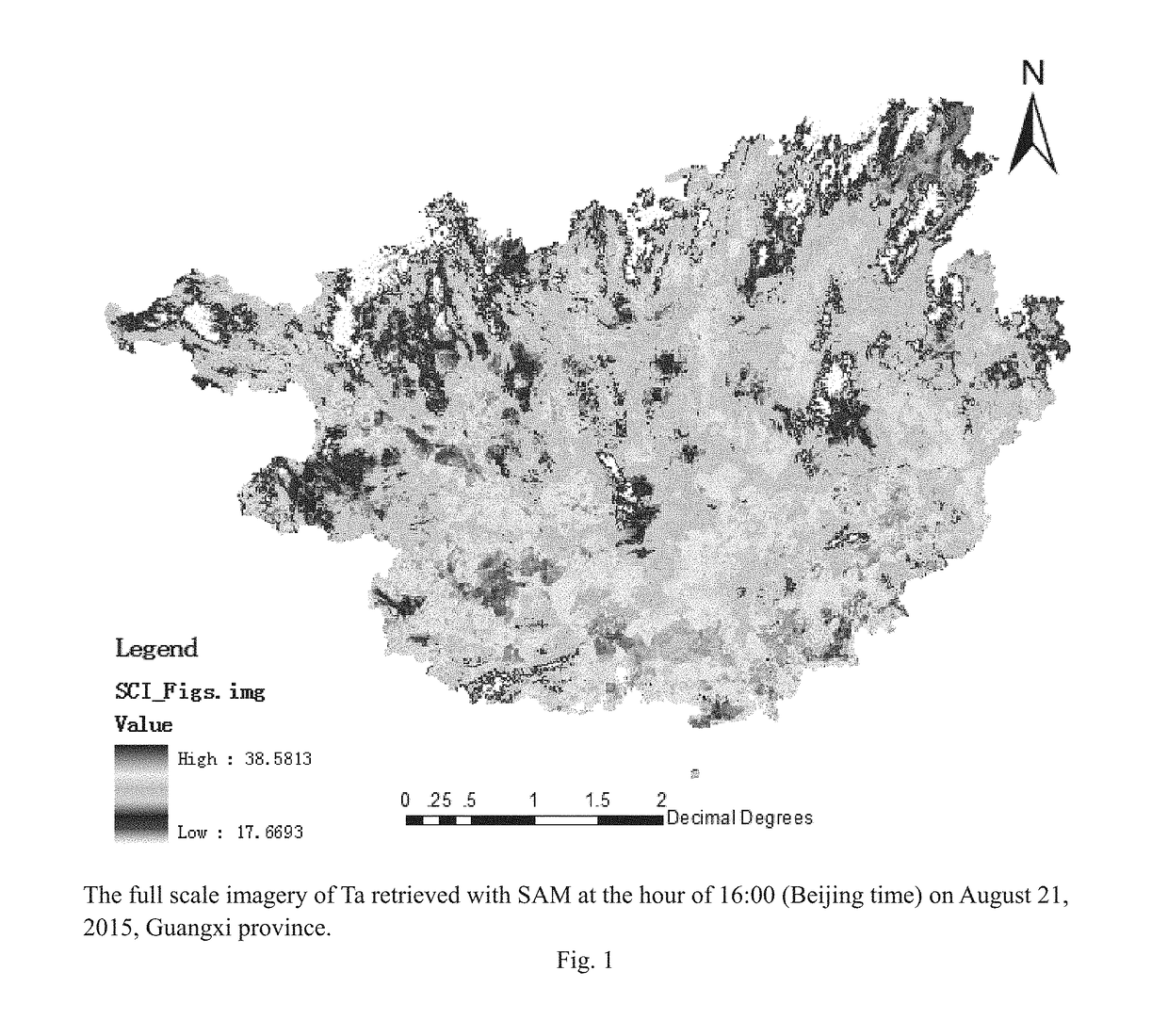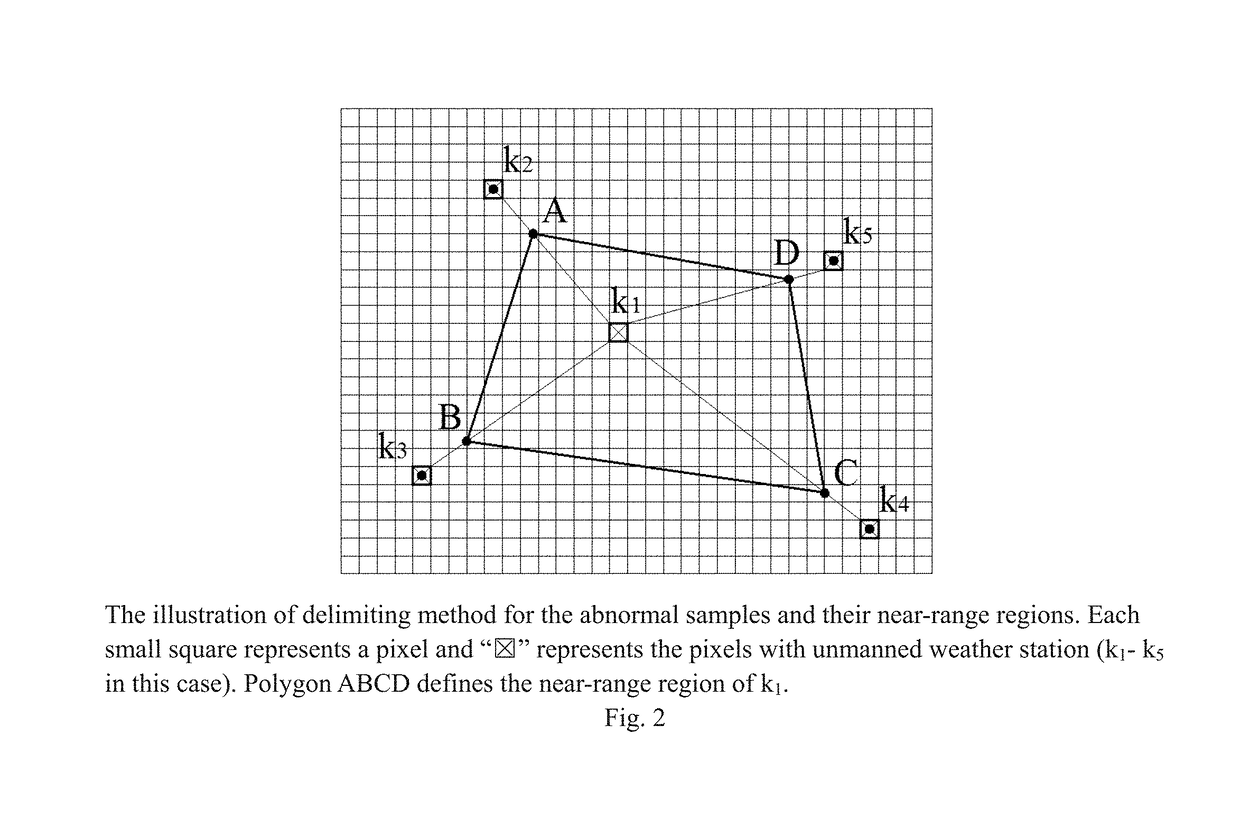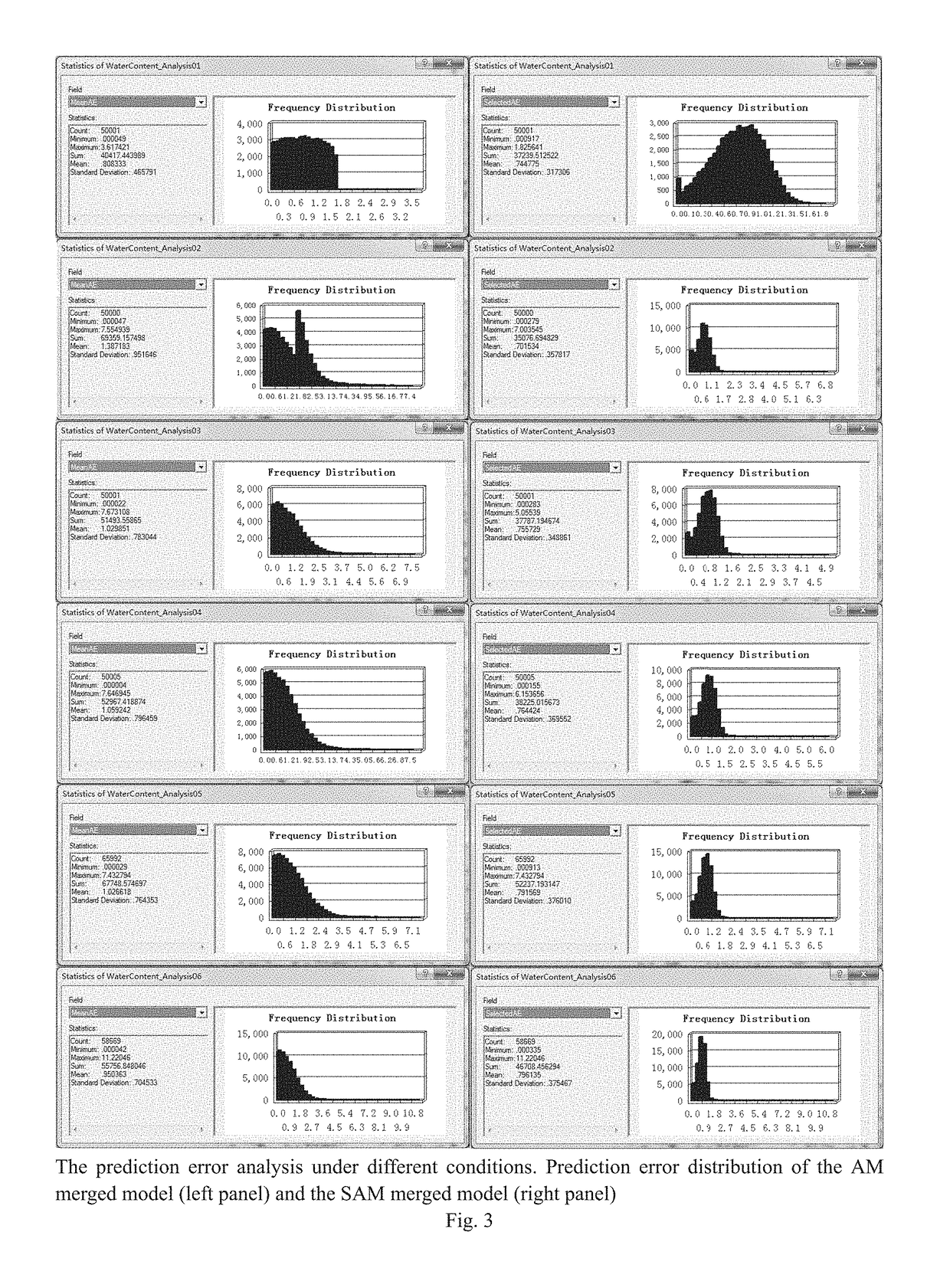Novel nonlinear method for area-wide near surface air temperature precision retrieval
a precision retrieval and nonlinear technology, applied in the field of meteorological data processing, can solve the problems of limiting the research and application of ta, the complexity of land surface characteristics and atmosphere variability in temperature retrieval over a large area remains a difficult task, and the temperature retrieved from satellite data can deviate from reality, so as to improve the accuracy of integrated learning, improve the accuracy of retrieval, and improve the robustness of area-wide application.
- Summary
- Abstract
- Description
- Claims
- Application Information
AI Technical Summary
Benefits of technology
Problems solved by technology
Method used
Image
Examples
case study # 1
Case Study #1
[0131]A method for area-wide near surface air temperature precision retrieval includes the following steps:
[0132]Step I. constructing raw data records and normalization, include:
[0133](1) set the target area and time. Locate the unmanned weather station locations. Set the temporal data collection window of 2-72 hours around the set time. Record temporal data according to the unmanned weather station recording time within the collection window.
[0134]In this case study, the entire Guangxi province of China (between latitude 20°54′-26°24′ N and longitude 104° 26-112° 04′ E with an area of 236,670 km2) was the targeted study area with 1359 unmanned weather stations. The uploaded temperature readings of these weather stations were collected and carefully examined and verified by the basic weather stations. The targeted single temporal point was Aug. 21, 2015 at 16:00 hour (Beijing time). MODIS and FY2C / D hourly data between 00 hour of Aug. 21 and 23 hour of Aug. 31 2015 were...
case study 2
[0205]Step VIII. identifying abnormal samples in surfTf and define their near-range regions.
[0206]FIG. 2 illustrates Step VIII—abnormal samples and their near-range regions. Each small square represents a pixel and “” represents the pixels with unmanned weather station (k1-k5 in this case). Polygon ABCD defines the near-range region of k1.
σ=dk1Adk1k2
[0207]FIG. 9 illustrates Step VIII and IX.
[0208]The black dot represents unmanned weather station locations; the square represents near-range regions while the light square represents unmanned weather station with normal error and its near-range region; the dark square represents unmanned weather station with abnormal error and its near-range region.
[0209]FIG. 9(a) shows abnormal error pixels (δ=δ0=2.0° C.) (E3 and A6) and their near-range regions in the full imagery of retrieved near surface air temperature created with the 1st sub-model (Full surfT1). FIG. 9(b) shows abnormal error pixels when δ=δ0=2.0° C. (E3 and C4) and near-range re...
case 1
Comparative Analysis Case 1
[0233]With the same dataset (16 hour, Aug. 21, 2015), Tables 2-4 illustrate the comparisons between the selective arithmetic mean method (SAM) of the current patent and the arithmetic mean method (AM) of Patent #201510103565. Table 2 shows the results of AM to compare to Tables 3 and 4.
[0234]In Table 2, column 2 is the error evaluation of the 1st sub-model for 16 hour Aug. 21, 2015 surfT1. Column 3 is the error evaluation of the 2nd sub-model for 16 hour Aug. 21, 2015 surfT2. Column 4 is the error evaluation of the 3rd sub-model for 16 hour Aug. 21, 2015 surfT3. Column 5 is the error evaluation of the 3rd sub-model for 16 hour Aug. 21, 2015 surfT3 using SAM.
[0235]Table 3 and 4 show the error analysis of δ0=2.0 / δ1=3.0 and δ0=2.5 / δ1=3.0
TABLE 2Prediction errors of sub-models of the arithmetic mean method*AMSAMModelVEC1ModelVEC2ModelVEC3ModelVEC3AM MergedParametersγ = 3.0γ = 5.0γ = 2.0γ = 5.0ModelMAE (° C.)1.362 1.694 1.5831.4431.137RMSEs (° C.)1.779 2.066 1.9...
PUM
| Property | Measurement | Unit |
|---|---|---|
| time point | aaaaa | aaaaa |
| digital elevation model | aaaaa | aaaaa |
| temperatures | aaaaa | aaaaa |
Abstract
Description
Claims
Application Information
 Login to View More
Login to View More - R&D
- Intellectual Property
- Life Sciences
- Materials
- Tech Scout
- Unparalleled Data Quality
- Higher Quality Content
- 60% Fewer Hallucinations
Browse by: Latest US Patents, China's latest patents, Technical Efficacy Thesaurus, Application Domain, Technology Topic, Popular Technical Reports.
© 2025 PatSnap. All rights reserved.Legal|Privacy policy|Modern Slavery Act Transparency Statement|Sitemap|About US| Contact US: help@patsnap.com



